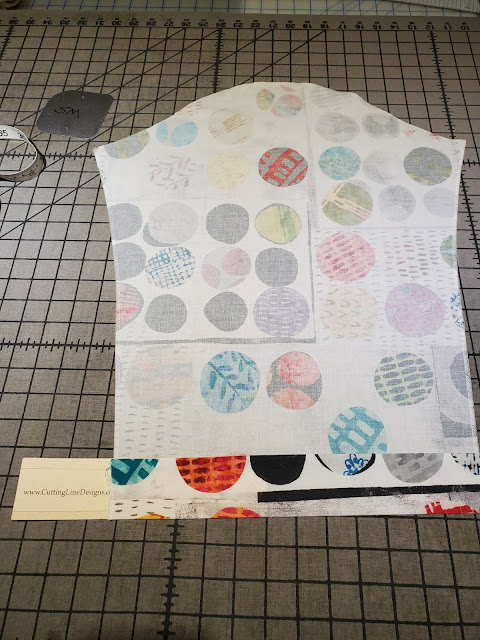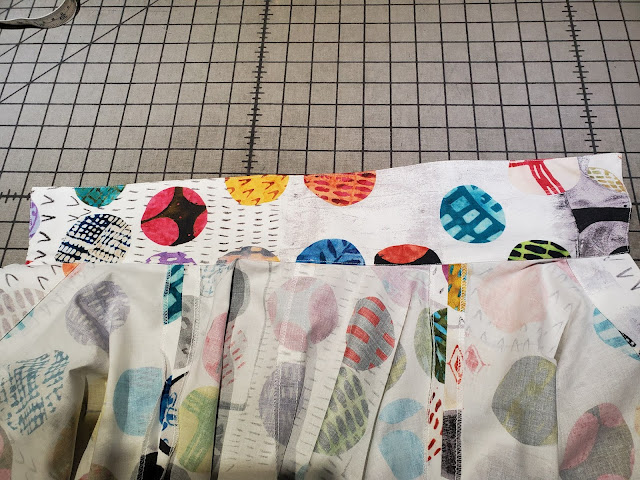We're almost there, everyone,
When I ended the previous blog, I had just sewn the sleeve seam, leaving 2" open at each end of the seam, like this:
Now let's move on. It's time to stitch the underarm sleeve seam from the raw hem edge (unfold the hems you've pressed earlier) to the dots at the underarm. Be sure to match those dots accurately.
Then stitch the side seam from the matched dots at the underarm to the matched dots at the top of the side vent.
(Let me interject something here. In all our instructions, we suggest that you keep the paper pattern pieces with the fabric pieces you have cut. Then the first step for each Front, Pocket, Sleeve etc. is to mark clips and dots. You probably did that when you originally cut the pieces, but we remind you. As you move on to each new garment section, you can quickly check that you have all the markings completed. If not, you can do it before you sew that section. It's much easier to mark while everything is flat, and you have the pattern right there, rather than folded away in the envelope.)
Ok, here's how the shirt looks once you've completed those seams. The pressed underarm sleeve seam is to the right, the pressed side seam is to the left, and the hole in the middle results from leaving 2" open at each end of the sleeve seam.
Turn the sleeve right side out so it's inside the garment, which remains wrong side out. Match the side and underarm seams at the dots, like this:
It's important to get the dots (where your stitching stopped) matched precisely.
Now fold back all the seam allowances so they are together and moved to one side of the seams. I put a pin through one dot, then look to see that it's through the dot on the other side. Sometimes it takes a couple of tries to get it right.
Once your dots are perfectly matched, pin to hold everything in place and stitch from where your previous sleeve seam ended to the dot, securing your stitching at the dot.
Now you're ready to serge the sleeve seams. Note that the underarm and side seam allowances are still free. That's the whole idea--they allow the garment to drape properly when worn. They don't pull or pucker.
Fold down the seam allowances on one side, and begin your serging on the other side:
Begin serging on the seam allowances that remain upright, trimming them to 3/8". Serge all the way around the sleeve. When you approach the end, fold down the seam allowance where you started. Your result will look like this--
This technique is used in several of our patterns, and now you know the details of how to complete this unique finish.
Next time, I'll review a few items for finishing your new shirt.























